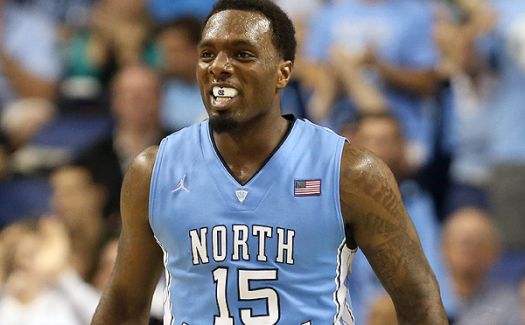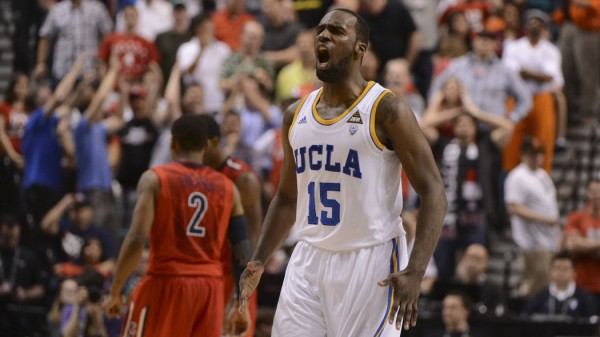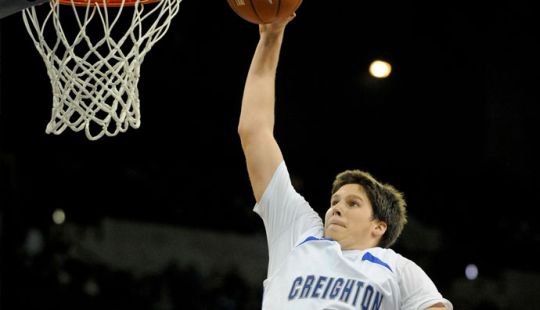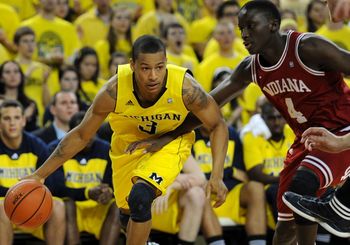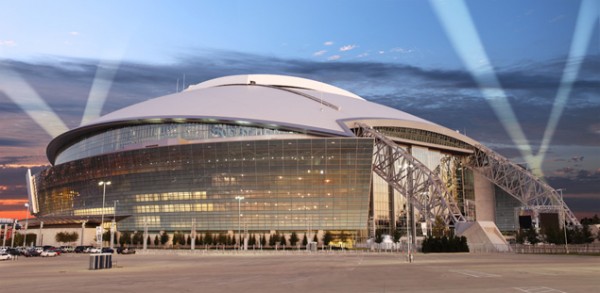Chris Johnson is an RTC Columnist. He can be reached @ChrisDJohnsonn.
The awesomeness of the national title game almost makes you wish the season had another five months of games to offer us. It doesn’t, of course, which means it’s about time we start glaring into the blank expanse of another long offseason. But before we move ahead, before we start counting down the months, weeks and days until tip-off 2013 (Midnight Madness!), let us go back and review the stories that defined the 2012-13 season. I’m talking about the headlines with the most resounding impact – not always the rosiest or most enjoyable developments. That means good and bad, but hopefully more good. If you kept a pulse on the game this year, the following tropes will strike a familiar note, positive or otherwise; if not, then where exactly have you been since November? In the interest of not dragging out this preamble, let’s turn to the matter at hand and count off 10 of the 2012-13 season’s biggest storylines.
(* in no particular order)
Kentucky. The domination and instant stardom of Kentucky circa 2012 had the poll voters convinced: the Wildcats had perpetually solved the one-and-done riddle, and everything that happened during that Anthony Davis-led title season would become something like a yearly occurrence for John Calipari’s team. Calipari would recruit the best players, mold them into a national champion-caliber outfit, and repeat the whole process again the next year. Clockwork. So Kentucky entered the reason ranked No. 3 in the AP Poll. This seemed like a reasonably fair assessment at the time; another loaded recruiting class, the residual winning momentum of the previous season, a once-recruiter turned excellent head coach who seemed to have this recruit, develop and draft thing figured out was evidence enough that the Wildcats would turn in another deep-Tournament run with the same freshmen-lead constitution that had brought the BBN so many good memories during the first few years of Calipari’s tenure. Kentucky needed to get to the Tournament first, and as the season wore on and the flaws of UK’s roster construction – almost zero experience to speak of, the absence of a true leader, the realization that not all highly-recruited freshmen are Anthony Davis and Michael Kidd-Gilchrist – became evidently obvious, reality sunk in: Kentucky wasn’t going to make it.
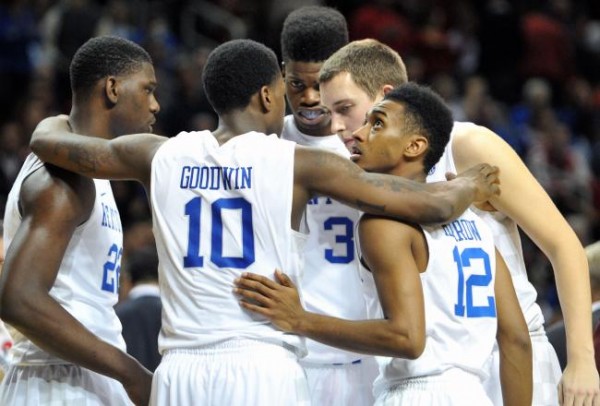
One year after winning a national title, Kentucky missed out on the NCAA Tournament (Getty Images).
A season-ending ACL injury to star center Nerlens Noel in February doomed the Wildcats’ chances, but the speculation hung right up until Selection Sunday, and when the Wildcats were passed over by the likes of Middle Tennessee, La Salle and Saint Mary’s, the only question remaining (a minor one, to be sure) was how motivated John Calipari’s team would be in a prospective NIT matchup at eight-seed Robert Morris. Yes, Kentucky, college hoops royalty at its purest, was being asked to finish its season on the road in Moon Township, PA., Calipari’s home town. And yes, Kentucky fell to the Colonials, prompting a rare NIT court storm from a packed Charles L. Sewall Center, a fitting end to a season that never lived up to the one preceding it. The backdrop to UK’s sudden plunge was that Calipari, seemingly undeterred by the chaos of the regular season, was assembling a recruiting class for the ages, built on six five-star commitments and still waiting word on the player many consider to be the best high school product since LeBron James, Andrew Wiggins. The BBN will be back in 2013, rest assured, but their dramatic fall from grace this year is not lost.
The Big Ten Was Awesome. We began the season with the highest of expectations about the Big Ten. Five of its teams (Indiana, Michigan, Ohio State, Michigan State, Wisconsin) began the season in the top 25, Indiana was a unanimous pick for preseason No. 1 and the top-to-bottom depth, just as much as the upper-tier quality, were huge selling points for a league many billed to not only outclass every other major conference this season, but also go down as one of the most dominant versions of any league in recent memory. The Big Ten didn’t disappoint us. Indiana, Michigan, Michigan State, Ohio State and Wisconsin waged intense wars in blaring campus gyms on a weekly basis, shocking upsets were sprung (Penn State over Michigan, Northwestern over Minnesota, Wisconsin at Indiana, etc.) and the league grew to corner the market on the most exciting brand of high-powered, tense, must-watch hoops in the country. It was good from start to finish, all the way up to the NCAA Tournament, where four teams survived the first weekend to land a spot in each of the four regional sites.
In the end, only one made it to the Final Four – ironically, of the four Big Ten teams left standing, Michigan was probably the biggest surprise of them all; they were widely pegged to lost their round-of-32 bout with VCU – and after fending off a nightmarish Syracuse 2-3 zone no one else had managed to decode during Tournament play, the Wolverines lost a close but thrilling national championship game. The lasting memory from the 2012 Big Ten, beyond all the consistent regular season drama and Victor Oladipo’s star turn and Trey Burke’s brilliance and Wisconsin’s remarkable year-to-year consistency, will be Spike Albrecht – for the sheer fact that Albrecht, on the last and most important date of the season, not only scored an unfathomable 17 points in 16 minutes while NPOY-sweeping Burke, hit with two early fouls, was fixed to the bench. It was awesome because Albrecht followed up his once-in-a-lifetime night by milking every last drip of his newfound celebrity: Spike tweeted at international modeling icon Kate Upton after learning of Upton’s attendance at the national championship game. Like I said, Big Ten: Awesome. There’s no confusion here.
Officiating Controversies. There is no escaping one lamentable truism about the 2012-13 season: the referees were not very good. Overall, on a composite game-by-game measure, the quality and consistency of officiating was rather low. Even if that’s just an arbitrary and fuzzy subjective measure, I can take it one step further. Just off the top of my head, I can point out three calls that directly affected the outcomes of important game. The first happened in Colorado’s January 3 road game at Arizona. The Buffaloes took the No. 3 Wildcats to the wire, and on the final possession, with the game knotted at 83, Colorado reserve guard Sabatino Chen banked in a wild three at the buzzer. GIFS and close-ups slowly made the rounds on Twitter, and most every angle confirmed what the real-time game tape appeared to say: Chen’s shot was good. The zebras thought otherwise – the shot was discounted. We later learned that standard definition replay monitors (the Pac 12 doesn’t use HD screens as a cost-saving measure) may have impaired the referees’ ability to clearly determine whether Chen’s shot went off before the buzzer. Like, Really? Incident No. 2: Kansas’ road win at Iowa State, wherein guard Elijah Johnson’s drive into Cyclones forward Georges Niang, resulting in an objectively false block call, actually merited an independent review from the Big 12 conference. Or, even better, we can talk about the national championship game, where Trey Burke’s perfectly clean block on Peyton Siva with just over five minutes remaining put the game seemingly out of reach for the Wolverines.

I’ve never felt comfortable pinning the outcomes of games entirely on the backs of officials; teams decide the games, referees impartially monitor the proceedings and anything that gets in the way is but another challenge in a game full of them. Everything evens out in the end, on balance. But then you get calls like Burke’s block and Niang’s blocking foul and the countless gaffes I failed to mention above, and it gets to a point where the competence and on-sight decision making of the most important third-party in sports is called into serious question. The Ed Rush Pac-12 officiating scandal only added more stink to the skeptical aura surrounding the entire profession. Officials are going to make mistakes. Judgments will be misguided. The human element of the game is not infallible. True. True. True. When the neutrality of those officials becomes a topic of debate, and we can’t wholeheartedly confide in those officials to respect the integrity of the game, the problem transcends mere block-charge minutiae or ticky-tack holding calls. The whole premise of a level playing field in college athletics is thrown into sharp scrutiny.
Read the rest of this entry »





























